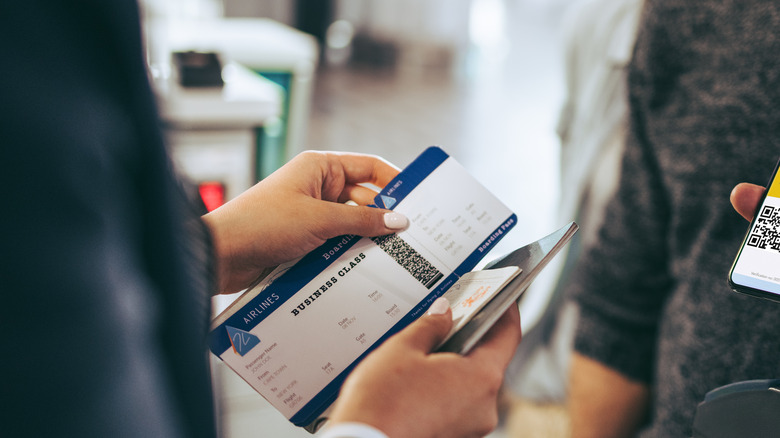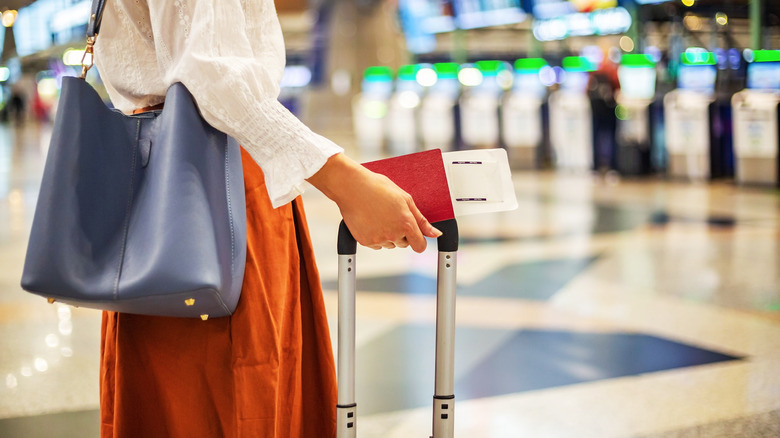What It Really Means When You See S/O Or SPTC On Your Boarding Pass
You've planned your vacation and you've booked your flights. You head to the airport with your boarding pass, which is always best printed out. Maybe the agent who checked your bags told you your gate number, so you head right through security to grab some snacks or walk around until your plane boards. During that time, you pull out your boarding pass to double-check your boarding group or what seat you'll be sitting in, but you don't look at it that closely. If you did, you might notice codes on there and wonder what they mean. Perhaps you've heard that there are codes that select you for a secondary screening, among other things. If you see S/O or SPTC, for example, what does that entail for your flight?
As it turns out, those two codes (like the FQTV code on your boarding pass) are nothing to worry about. S/O simply means you have a stopover on your flight, while SPTC means that you have a stopover that is longer than just a few hours. That can actually be to your benefit, and we'll explain how. Plus, there is another four-letter code that could mean your time at the airport could become a bit more complicated. Here's all the info about your boarding pass.
S/O, SPTC, and how the latter can be beneficial
S/O is self-explanatory, but with SPTC ("Stopover Paid by the Carrier") — the longer stopover — you may be able to get a discount on accommodations and other things. Some airlines have "stopover programs" that allow you to add a stop on your itinerary so you can take from 24 hours to 10 days to explore a city. Airlines have different policies, perks, and participating cities, so check with your airline, but you might get discounts on hotels, tours, museum admissions, and restaurants. For instance, TAP Air Portugal lets you stay in Porto or Lisbon for up to 10 days, with discounts on things like certain hotels and venues and a discounted flight for future Portugal destinations. Just click "add stopover" when you book so you can input your stopover information.
A few other codes on your boarding pass are simple things like ETKT, which is the ticket number that the airline assigned you. If you've entered a frequent flier number, that's FQTV. PNR is your "passenger name record" number, a six-character code you are assigned by the airline, and the boarding order or "sequence number" is SEQ or SEQ NO. However, if you get an SSSS, that means you've been picked for additional security screenings, which are often random. You may be pulled aside for a bag search or electronics swabbing before you go on your way to the gate.

